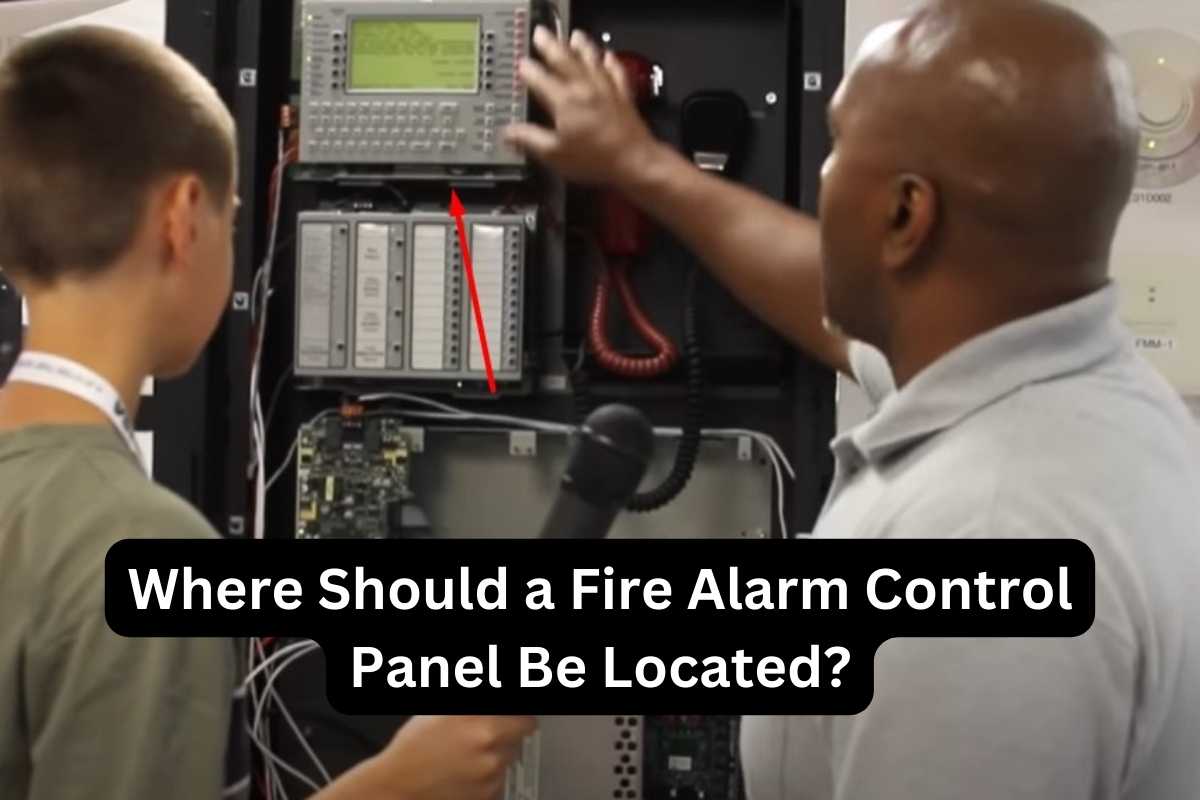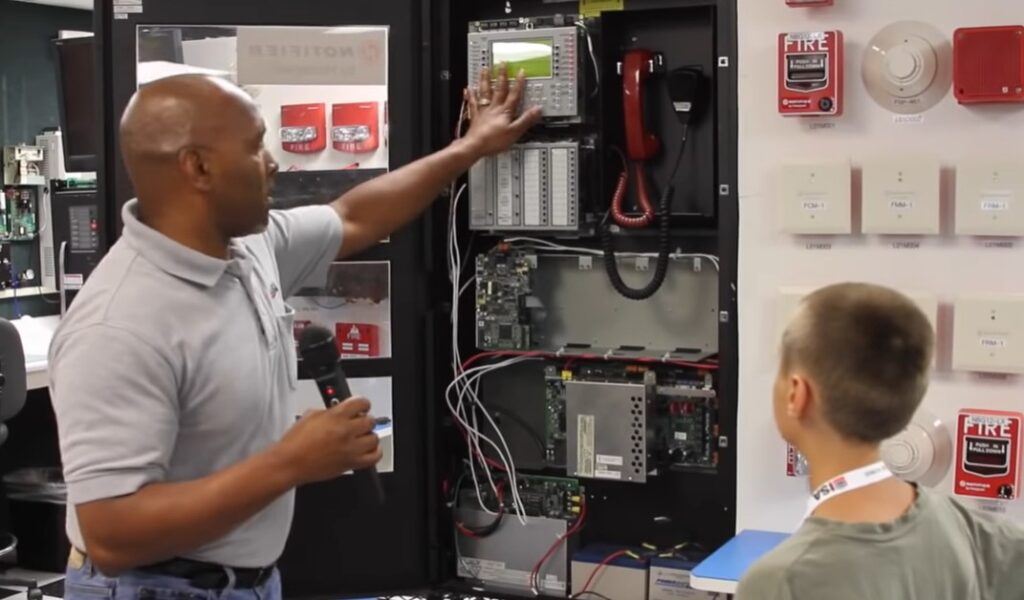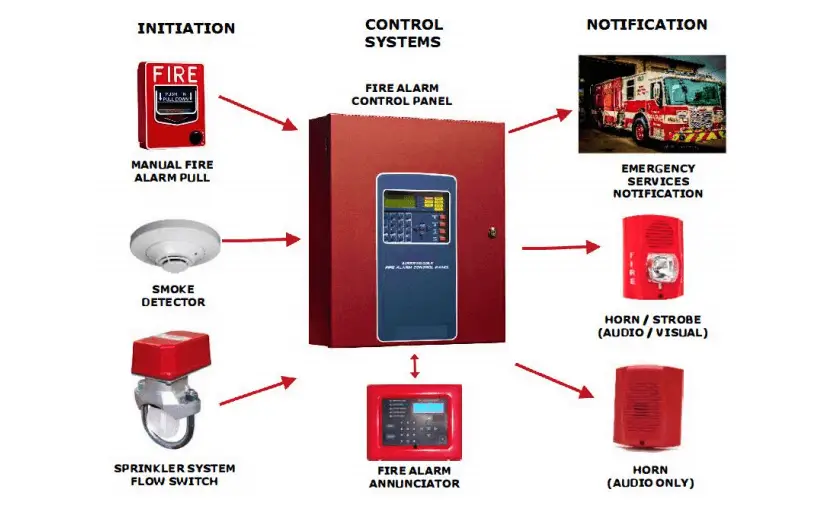Phone:
(701)814-6992
Physical address:
6296 Donnelly Plaza
Ratkeville, Bahamas.

A fire alarm control panel should be located in a clearly visible and accessible area that is free from potential obstructions. It is commonly placed near the main entrance for easy access by emergency personnel.
Ensuring the safety and readiness of a building in the event of a fire is crucial, and the placement of the fire alarm control panel is a critical aspect of this preparedness. The control panel acts as the brain of the fire alarm system, constantly monitoring and managing the various sensors and alarms throughout the premises.
It’s vital for the panel to be in a location that building occupants and first responders can reach without hindrance, to facilitate swift assessment and response to potential fire incidents.
Proper signage should also accompany the panel, marking it clearly to avoid any confusion during an emergency. The strategic positioning of the control panel can significantly enhance the effectiveness of the fire alarm system, thus contributing to the overall safety protocols of the establishment.

A Fire Alarm Control Panel (FACP), often known as the brain of a fire alarm system, plays a critical role in safeguarding lives and property.
This vital equipment continuously monitors various environmental inputs from smoke detectors, heat detectors, and manual pull stations.
Upon detecting a potential fire event, the FACP springs into action to initiate protective measures, such as alerting occupants and mobilizing emergency response teams.
The FACP is the heart of fire safety, pumping life-saving information to all connected components. It performs routine checks to ensure all system parts communicate effectively.
Its location is paramount, demanding easy access for rapid response, typically near entrances for firefighters to evaluate and respond to fire alarms swiftly.

Understanding the importance of regulatory codes and standards is vital for the placement of fire alarm control panels. These codes ensure proper installation, which promotes safety and compliance. Let’s explore the major codes you must follow.
The National Fire Protection Association (NFPA) sets forth specific guidelines in the NFPA 72 National Fire Alarm and Signaling Code.
This code outlines the necessary parameters for installing fire alarm control panels. Take note of the following points from NFPA 72:
In addition to NFPA guidelines, your local jurisdiction has fire safety regulations that affect the placement of fire alarm control panels. These regulations can vary, but generally include:
| Requirement | Description |
|---|---|
| Accessibility | Must be reachable 24/7 by emergency personnel. |
| Visibility | Should be visible and marked accordingly. |
| Environmental Conditions | Protected from extreme temperatures and moisture. |
| Emergency Power | Must have access to a reliable power source. |
Always consult with local authorities to ensure your installation meets all regional fire code requirements. These local codes must be adhered to alongside the NFPA standards.
The placement of a Fire Alarm Control Panel (FACP) is crucial for safety and efficiency. Understanding the factors that influence its location can help ensure fast response times and ease of maintenance. Here are the key considerations:.
A strategically placed FACP allows easy access for authorized personnel during routine checks and urgent situations. The panel should be in an area that maintenance staff can reach without difficulty. Proper placement includes:
In an emergency, visibility is key. The FACP should be apparent to anyone responding to the alarm. Critical points to consider for visibility include:
The environment around a Fire Alarm Control Panel can affect its performance. It’s important to place the FACP:
Overall, the FACP should reside in a spot that ensures functionality, is easily reachable, and remains visible at all times. These considerations guarantee that in the event of a fire, the system operates flawlessly, aiding in the protection of lives and property.
Choosing the right location for a fire alarm control panel is critical. It ensures a safe and efficient response during emergencies.
For optimal performance, place the panel at eye level. This ensures clear visibility and easy access for maintenance. Maintain a clear area around the panel, free from obstructions.
Keep the panel safe from unwanted interference. Only authorized personnel should have access.
The panel must not disrupt the flow of the building. Integrate it into the design seamlessly. Select a location that is visible and accessible during an emergency.
| Aspect | Detail |
|---|---|
| Visibility | Must be seen easily by building occupants and emergency responders. |
| Accessibility | Should be reachable without obstacles, even in blackout conditions. |
The fire alarm control panel acts as the brain of your fire safety system. Proper maintenance and accessibility ensure this vital equipment performs reliably in emergencies.
This section focuses on key aspects of optimizing the location of your fire alarm control panel for effective maintenance and swift response.
Consistent checks guard against malfunctions. Position the panel to allow effortless routine inspections. Create a schedule ensuring regular assessment:
Detailed instructions and labels guide proper use and troubleshooting. Maintain clarity:
These steps reduce delays during emergencies and facilitate efficient servicing.
Staff training is crucial for the panel’s effective operation. Implement targeted sessions:
Empower your team with the knowledge to act swiftly when every second counts.
Choosing the perfect spot for a Fire Alarm Control Panel (FACP) is crucial for safety. But beyond just placement, advanced features can make a big difference. Let’s explore smart add-ons that enhance safety even more.
Integrating a FACP into a building’s safety network is key. Here is why:
Keep an eye on safety from afar. Remote monitoring offers:
Choose a FACP that grows with your needs. Look for:
| Feature | Benefit |
|---|---|
| Modular Design | Easy to add more sections. |
| Upgradable Software | Keeps your system up-to-date. |
| Expandable Zones | Protects new areas without a new system. |
A fire alarm panel should be installed in a secure, accessible location, such as a main corridor or entrance lobby, away from potential hazards and at the recommended height by local codes.
Fire alarm control panels are typically installed in accessible yet secure locations, such as dedicated utility rooms or areas not readily open to the public, like building entryways or main corridors.
A fire alarm panel should not be installed behind a door; it must be easily accessible and visible for effective emergency response.
The recommended mounting height for a fire alarm control panel is about 48 to 54 inches from the floor to the center of the device.
Selecting the right spot for your fire alarm control panel is critical for prompt response and safety.
Place it in an easily accessible location, considering visibility and compliance with legal requirements. Prioritize an area that’s secure yet reachable during an emergency.
For assured protection, consult professionals and adhere to codes. Stay safe, stay prepared.